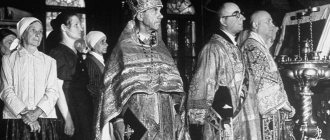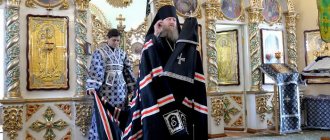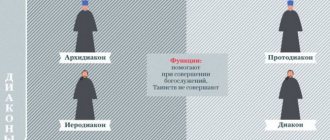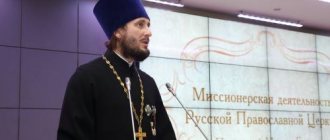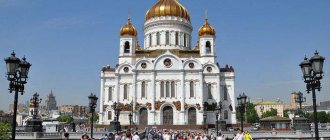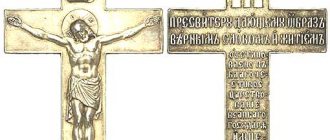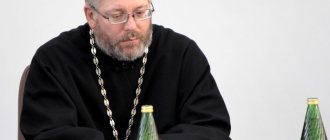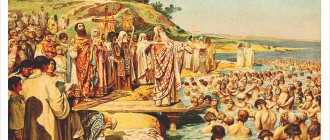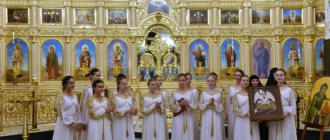Early Church
The Russian Orthodox Church was founded in 988.
The clergy adopted the original hierarchical structure in Constantinople. Over the next 9 centuries, the Russian Church was largely dependent on Byzantium. During the period from 988 to 1589, the metropolitan system was practiced. Then, from 1589 to 1720, the head of the Russian Orthodox Church was the patriarch. And from 1721 to 1918 the Church was governed by the Synod. Currently, the sole ruler of the Russian Orthodox Church is Patriarch Kirill. Today the Synod is just an advisory body.
Significance of the Synodal period
So, under Peter I, the patriarchate was abolished, and the Church became dependent on the state in all aspects, with the exception of dogmas and canons. This church-administrative body existed until 1918.
The two-hundred-year Synodal period in the history of the Russian Church was controversial. On the one hand, the reform of Peter I contributed to the significant development of church education and missionary work. Active activities were also carried out to preserve church historical monuments.
On the other hand, during the Synodal period the Church was a part of the bureaucratic system dependent on officials. She could not have an independent position on most issues. All this led to the identification of the Church with the state in the eyes of the common people and the formalization of religion. Restrictions were introduced for monasticism, and life became more difficult for the parish clergy. Hieromonk Michael (Chepel) notes:
“A rationalizing view of the processes taking place in it [the Church] and a lack of understanding of its essence led to many sad consequences, among which are attempts to resolve spiritual issues through police measures, and the departure from Orthodoxy of many representatives of the educated part of Russian society.”
Peter's church reform was largely guided by the examples of Protestant states, where the monarch is the head of the Church. In this regard, Archpriest Alexander Schmeman calls Peter’s transformations “a comprehensive transition to a Western attitude of consciousness” and “the reign of Western absolutism in Russia.”
Rules of the Universal Church
According to the general rules of world Orthodoxy, the Synod can have judicial, legislative, administrative, supervisory and administrative powers. Interaction with the state is carried out through a person appointed by the secular government. For the effective work of the Synod, the following bodies are created:
- Synodal Office.
- Spiritual Education Committee.
- Department of Synodal Printing Houses.
- Office of the Chief Prosecutor.
- Spiritual School Council.
- Economic management.
The Russian Orthodox Church is divided into dioceses, the boundaries of which coincide with the boundaries of the regions of the state. The resolutions of the synod are mandatory for clergy and recommended for parishioners. To adopt them, a special meeting of the Synod of the Russian Orthodox Church is held (twice a year).
Official reasons for the church's acceptance of synodal governance
The prerequisites for which this particular form of government was once adopted in the Russian Orthodox Church (by the command of Peter I),
indicated in the Spiritual Regulations and consisted of the following:
- Several clergy can establish the truth much faster and better than one.
- The decisions of the conciliar authority will have much greater weight and authority than the decisions of one person.
- In the event of illness or death of the sole ruler, affairs will not be stopped.
- Several people can make a much more impartial decision than one.
- It is much more difficult for the authorities to influence a large number of clergy than to influence the sole ruler of the church.
- Such power can arouse pride in one person. At the same time, it will be difficult for ordinary people to separate the church from the monarchy.
- The Holy Synod can always condemn the unlawful actions of one of its members. To analyze the wrong decisions of the patriarch, it is necessary to call eastern clergy. And this is expensive and time-consuming.
- The Synod is, first of all, a kind of school in which more experienced members can train newcomers in the management of the church. Thus, work efficiency increases.
Literature[edit | edit code]
- Kedrov N.I. Spiritual regulations in connection with the transformative activities of Peter the Great
. Moscow, 1886. - Tikhomirov P.V. The canonical dignity of Peter the Great's reforms on church governance
. - Theological Bulletin, 1904, Nos. 1 and 2. - Prot. A. M. Ivantsov-Platonov. About Russian church administration
. St. Petersburg, 1898. - Tikhomirov L. A. Monarchical statehood
.
Part III, ch. 35: Bureaucracy in the Church
. - Prot. V. G. Pevtsov. Lectures on Church Law
. St. Petersburg, 1914.
The main feature of the Russian Synod
A characteristic feature of the newly created Russian Synod was that it was recognized as hierarchically equal by the Eastern patriarchs. Similar bodies in other Orthodox states played only a secondary role under a single dominant person. Only the Greek Synod had the same power within the church of its country as the Russian one. The Houses of God of these two states have always had much in common in their structure. The Eastern Patriarchs called the Holy Synod of the Russian Orthodox Church “brother beloved in the Lord,” that is, they recognized its power as equal to their own.
Historical composition of the Synod
Initially this governing body consisted of:
- President (Stefan Yavorsky - Metropolitan of Ryazan);
- Vice-presidents in the amount of two people;
- Advisors and assessors (4 people each).
The members of the Synod were elected from among the archimandrites, bishops, city archpriests and abbots. The Church adopted rules protecting freedom of expression. Thus, abbots and archpriests with the bishops standing above them should not have taken part in the work of the Synod at the same time. After the death of Stefan Jaworski, the position of chairman was abolished. From that moment on, all members of the Synod had equal rights. Over time, the composition of this body changed periodically. So, in 1763 it consisted of 6 people (3 bishops, 2 archimandrites and 1 archpriest). For 1819 - 7 people.
Almost immediately after the decision to create the Synod was made, the monarch ordered the membership of an observing secular person in this body. This representative of the state was elected from respectable officers. The position given to him was called “Chief Prosecutor of the Synod.” According to the instructions approved by the monarch, this man was “the eye of the Sovereign and the attorney for state affairs.” In 1726, the Synod was divided into two parts - spiritual and secular economic.
A brief history of synodal administration from 1721 to 1918.
In the first years of his reign, Bishop Theophan had great influence on the decisions of the Synod. Not a single church book could be published without his approval.
This man was friends with Bismarck and Osterman and all the bishops, one way or another, were dependent on him. Theophanes achieved similar power after the fall of the Great Russian party in the Synod. At this time, the Soviet government was going through hard times. The confrontation between Anna Ioannovna and the daughters of Peter the Great led to persecution of those who sympathized with the latter. One day, all the members of the Synod except Feofan, following a denunciation, were simply dismissed, and others were appointed in their place, much more loyal to him. Of course, after this he achieved unprecedented power. Feofan died in 1736.
In the end, Elizabeth did ascend to the throne. After this, all the clergy exiled during Theophan’s time were returned from exile. The period of her reign was one of the best for the Russian Orthodox Synod. However, the Empress still did not restore the patriarchate. Moreover, she appointed a particularly intolerant chief prosecutor, Ya. Shakhovsky, who was known as a zealous zealot for state affairs.
During the time of Peter III, the Holy Synod of the Russian Orthodox Church was forced to tolerate German influence, which, however, ended with the accession of Catherine II to the throne. This queen did not introduce any special innovations into the Synod. The only thing she did was close the savings board. Thus, the Synod became united again.
Under Alexander I, Prince A. N. Golitsyn, who in his youth was known as the patron of various kinds of mystical sects, became chief prosecutor. As a practical person, he was even considered useful to the Synod, especially at first. Filaret, who was elevated to the rank of metropolitan by the emperor in 1826, became a prominent church figure during the time of Nicholas I. Since 1842, this clergyman took an active part in the work of the Synod.
“Dark Times” of the Synod of the early 20th century
The main reason for the return to the patriarchate in 1917-18. there was interference in the affairs of G. Rasputin’s church management and an aggravation of the political situation around this body.
The Synod is the inviolability of the hierarchs. The events associated with the death of the leading member of this body, Anthony, and the appointment in his place of Metropolitan Vladimir, and subsequently Pitirim, led to the intensification of unacceptable passions in the highest church administrative echelons and the creation of a heavy atmosphere of mistrust. Metropolitan Pitirim was considered by most clergy to be a “Rasputinist.”
Considering that by the end of 1916 many other members of the Synod were followers of this royal henchman (for example, Chief Prosecutor Raev, the manager of the chancellery Guryev and his assistant Mudrolyubov), the church began to look like almost the main opposition to the royal throne. Members of the administrative body who did not belong to the selected circle of “Rasputinists” were afraid to once again express their opinion, knowing that it would be immediately transmitted to Tsarskoe Selo. It was no longer, in fact, the Synod of the Orthodox Church that was managing affairs, but G. Rasputin alone.
Return to patriarchal rule
After the revolution in February 1917, the Provisional Government, in order to correct this situation, issued a decree dismissing all members of this body and convening new ones for the summer session.
On August 5, 1917, the post of Chief Prosecutor was abolished and the Ministry of Religions was established. This body issued decrees on behalf of the Synod until January 18, 1918. On February 14, 1918, the last resolution of the Council was published. According to this document, the powers of the Holy Synod were transferred to the patriarch. This body itself became collegial.
Restoration of the patriarchate and establishment of the Holy Synod
At the beginning of the 20th century, the synodal system was increasingly criticized by representatives of the clergy and the Orthodox intelligentsia. The Church was in a state of “stagnation.” There was a growing need to convene an All-Russian Local Council to discuss the restoration of the patriarchate. The council, preparations for which had been underway since the early 1900s, was convened only in August 1917. It took place until September 1918 against the backdrop of such significant events as the fall of the monarchy, the overthrow of the Provisional Government, the October Uprising, the beginning of the Civil War, as well as the publication by the Council of People's Commissars of a decree on the separation of church and state.
The socio-political situation in the country put an end to the vacillations of the clergy and pushed them to make a decision to restore the patriarchate. Let us quote the words of Metropolitan Mitrofan (Krasnopolsky):
“The matter of restoring the patriarchate cannot be postponed: Russia is burning, everything is perishing. And is it really possible to argue for a long time now... When there is a war, a single leader is needed...”
In the fall of 1917, at the All-Russian Local Council, Metropolitan of Moscow Tikhon (Belavin) (1865-1925) was elected patriarch. The same Council established the highest governing body in the Russian Orthodox Church - the Holy Synod. This was not a modification of the old Synod, but the creation of a new, now not a state, but a church body chaired by the patriarch. The former Holy Governing Synod was finally abolished a few months later.
Chairman and permanent members
Today, the Synod of the Russian Orthodox Church is headed (and holds the position of chairman) by Patriarch Kirill Gundyaev.
Its permanent members are the following metropolitans:
- Kyiv and all Ukraine Vladimir.
- Ladoga and St. Petersburg Vladimir.
- Slutsky and Minsky Filaret.
- All Moldavia and Vladimir Kishinevsky.
- Kolomensky and Krutitsky Juvenaly.
- Kazakh and Astana Alexander.
- Central Asian Vincent.
- Managing Director of the Patriarchate of Moscow, Metropolitan Barsanuphius of Mordovia and Saransk.
- Chairman of the Department for External Relations of the Moscow Patriarchate, Metropolitan Hilarion of Volokolamsk.
Russian Orthodox Church
1. The Holy Synod, headed by the Patriarch of Moscow and All Rus' (Locum Tenens), is the governing body of the Russian Orthodox Church in the period between Councils of Bishops.
2. The Holy Synod is responsible to the Council of Bishops and, through the Patriarch of Moscow and All Rus', submits to it a report on its activities during the inter-Council period.
3. The Holy Synod consists of a chairman - the Patriarch of Moscow and All Rus' (Locum Tenens), nine permanent and five temporary members - diocesan bishops.
4. The permanent members are: by department - metropolitans of Kiev and all Ukraine; St. Petersburg and Ladoga; Krutitsky and Kolomensky; Minsky and Slutsky, Patriarchal Exarch of All Belarus; Chisinau and all Moldova; Astana and Kazakhstan, head of the Metropolitan District in the Republic of Kazakhstan; Tashkent and Uzbekistan, head of the Central Asian Metropolitan District; by position - chairman of the Department for External Church Relations and manager of the affairs of the Moscow Patriarchate.
5. Temporary members are called to attend one session, according to the seniority of the episcopal consecration, one from each group into which the dioceses are divided. A bishop cannot be summoned to the Holy Synod until the expiration of his two-year term of administration of a given diocese.
6. The Synodal year is divided into two sessions: summer (March-August) and winter (September-February).
7. Diocesan bishops, heads of synodal institutions and rectors of theological academies may be present in the Holy Synod with the right of an advisory vote when considering cases concerning the dioceses, institutions, academies they govern or their exercise of church-wide obedience.
8. The participation of permanent and temporary members of the Holy Synod in its meetings is their canonical duty. Members of the Synod who are absent without good reason are subject to fraternal admonition.
9. In exceptional cases, the quorum of the Holy Synod consists of 2/3 of its members.
10. Meetings of the Holy Synod are convened by the Patriarch of Moscow and All Rus' (Locum Tenens). In the event of the death of the Patriarch, no later than on the third day, the Patriarchal Vicar - Metropolitan of Krutitsky and Kolomna - convenes a meeting of the Holy Synod to elect a Locum Tenens.
11. As a rule, meetings of the Holy Synod are closed. Members of the Holy Synod are seated according to the protocol adopted in the Russian Orthodox Church.
12. The Holy Synod works on the basis of an agenda presented by the chairman and approved by the Holy Synod at the beginning of the first meeting. Issues requiring preliminary study are sent by the chairman to the members of the Holy Synod in advance. Members of the Holy Synod may make proposals on the agenda and raise issues with prior notification of the chairman.
13. The Chairman presides over the meetings in accordance with the adopted rules.
14. In the event that the Patriarch of Moscow and All Rus', for any reason, is temporarily unable to perform chairmanship duties in the Holy Synod, the duties of the chairman are performed by the oldest permanent member of the Holy Synod by episcopal consecration. The Temporary Chairman of the Holy Synod is not a canonical Locum Tenens.
15. The secretary of the Holy Synod is the manager of the affairs of the Moscow Patriarchate. The secretary is responsible for preparing the materials necessary for the Holy Synod and compiling the journals of the meetings.
16. Matters in the Holy Synod are decided by the general consent of all members participating in the meeting or by a majority vote. In case of equality of votes, the vote of the chairman is decisive.
17. No one present in the Holy Synod may abstain from voting.
18. Each of the members of the Holy Synod, in case of disagreement with the decision made, may submit a separate opinion, which must be stated at the same meeting outlining its reasons and submitted in writing no later than three days from the date of the meeting. Individual opinions are attached to the case without stopping its decision.
19. The chairman does not have the right, by his own authority, to remove from discussion the matters proposed on the agenda, to prevent their decision or to suspend the implementation of such decisions.
20. In those cases when the Patriarch of Moscow and All Rus' admits that the decision made will not bring benefit and benefit to the Church, he protests. The protest must be made at the same meeting and then put in writing within seven days. After this period, the case is again considered by the Holy Synod. If the Patriarch of Moscow and All Rus' does not find it possible to agree with the new decision of the case, then it is suspended and referred to the Council of Bishops for consideration. If it is impossible to postpone the matter and a decision must be made immediately, the Patriarch of Moscow and All Rus' acts at his own discretion. The decision made in this way is submitted for consideration to an extraordinary Council of Bishops, on which the final resolution of the issue depends.
21. When the Holy Synod is considering a case of a complaint against members of the Holy Synod, the interested person may be present at the meeting and give explanations, but when the case is resolved, the accused member of the Holy Synod is obliged to leave the meeting room. When considering a complaint against the chairman, he transfers the chairmanship to the oldest hierarch according to episcopal consecration from among the permanent members of the Holy Synod.
22. All journals and resolutions of the Holy Synod are signed first by the chairman, then by all members present at the meeting, at least some of them did not agree with the decision made and submitted a separate opinion on it.
23. The determinations of the Holy Synod come into force after they are signed and are not subject to revision, except in cases where new data is presented that changes the essence of the matter.
24. The Chairman of the Holy Synod exercises supreme supervision over the exact execution of the adopted resolutions.
25. The duties of the Holy Synod include:
a) care for the intact preservation and interpretation of the Orthodox faith, norms of Christian morality and piety;
b) serving the internal unity of the Russian Orthodox Church;
c) maintaining unity with other Orthodox Churches;
d) organizing the internal and external activities of the Church and resolving issues of general church significance arising in connection with this;
e) interpretation of canonical decrees and resolution of difficulties associated with their application;
f) regulation of liturgical issues;
g) issuing disciplinary decisions concerning clergy, monastics and church workers;
h) assessment of the most important events in the field of interchurch, interfaith and interreligious relations;
i) maintaining interfaith and interreligious ties, both on the canonical territory of the Moscow Patriarchate and beyond its borders;
j) coordination of the actions of the entire Russian Orthodox Church in its efforts to achieve peace and justice;
k) expression of pastoral concern for social problems;
l) addressing special messages to all children of the Russian Orthodox Church;
m) maintaining proper relations between the Church and the state in accordance with this Charter and current legislation;
o) approval of the statutes of Self-Governing Churches, Exarchates and Metropolitan Districts;
n) adoption of civil statutes of the Russian Orthodox Church and its canonical divisions, as well as introducing changes and additions to them;
p) consideration of the journals of the Synods of the Exarchates and Metropolitan Districts;
c) resolving issues related to the establishment or abolition of canonical divisions of the Russian Orthodox Church accountable to the Holy Synod with subsequent approval at the Council of Bishops;
r) establishing the procedure for ownership, use and disposal of buildings and property of the Russian Orthodox Church;
s) approval of decisions of the highest church court in cases provided for by the Regulations on the Church Court;
f) canonization of locally revered saints and submission of the issue of their church-wide glorification to the Council of Bishops.
26. Holy Synod:
a) elects, appoints, in exceptional cases moves bishops and dismisses them;
b) calls bishops to attend the Holy Synod;
c) if necessary, on the proposal of the Patriarch of Moscow and All Rus', considers the reports of bishops on the state of the dioceses and makes decisions on them;
d) through its members, inspects the activities of bishops whenever it deems it necessary;
e) determines the content of bishops.
27. The Holy Synod appoints:
a) heads of synodal institutions and, on their recommendation, their deputies;
b) rectors of theological academies and seminaries, abbots (abbesses) and governors of monasteries;
c) bishops, clergy and laity to undergo responsible obedience in distant countries;
d) on the proposal of the Patriarch of Moscow and All Rus', members of the Supreme Church Council from among the heads of synodal or other church-wide institutions, divisions of the Moscow Patriarchate;
e) on the proposal of the Patriarch of Moscow and All Rus', members of the Inter-Council Presence.
f) The Holy Synod confirms diocesan bishops in the position of sacred archimandrites of especially significant monasteries, according to their proposal.
28. The Holy Synod may create commissions or other working bodies to care for:
a) on solving important theological problems related to the internal and external activities of the Church;
b) on the storage of the text of the Holy Scriptures, on its translations and publication;
c) on storing the text of liturgical books, on its correction, editing and publication;
d) about the canonization of saints;
e) on the publication of collections of holy canons, textbooks and teaching aids for religious educational institutions, theological literature, official periodicals and other necessary literature;
f) on improving the theological, spiritual and moral training of the clergy and on the activities of religious educational institutions;
g) about mission, catechesis and religious education;
h) about the state of spiritual enlightenment;
i) about the affairs of monasteries and monastics;
j) about works of mercy and charity;
k) about the proper state of church architecture, icon painting, singing and applied arts;
l) about church monuments and antiquities under the jurisdiction of the Russian Orthodox Church;
m) on the production of church utensils, candles, vestments and everything necessary to maintain liturgical tradition, splendor and decorum in churches;
o) on pensions for the clergy and church workers;
n) about solving economic problems.
29. Carrying out the leadership of synodal institutions, the Holy Synod:
a) approves regulations (statutes) on their activities;
b) approves the annual work plans of synodal institutions and accepts their reports;
c) makes decisions on the most important aspects of the current work of synodal institutions;
d) if necessary, carries out an audit of such institutions.
30. The Holy Synod approves the church-wide spending plan and, if necessary, considers the estimates of synodal institutions, religious educational institutions, as well as relevant financial reports.
31. In caring for dioceses, monasteries and religious educational institutions, the Holy Synod:
a) forms and abolishes Exarchates, Metropolitan districts, metropolises and dioceses, determines (changes) their boundaries and names with subsequent approval by the Council of Bishops;
b) adopts standard regulations on diocesan institutions;
c) approves the statutes of monasteries and carries out general supervision of monastic life;
d) establishes stauropegia;
e) on the recommendation of the Educational Committee, approves standard charters and standard curricula of theological educational institutions, as well as standard programs of theological seminaries;
f) ensures that the actions of all church authorities in dioceses, deaneries and parishes comply with legal regulations;
g) if necessary, conducts audits.
32. The Holy Synod issues opinions on controversial issues arising in connection with the interpretation of this Charter.
Location
Immediately after its establishment, the Synod was located in St. Petersburg on City Island. After some time, meetings began to be held in the building of the Twelve Collegiums. In 1835, the Synod moved to Senate Square. From time to time, meetings were moved to Moscow. For example, during the coronation of monarchs. In August 1917, the Synod finally moved to Moscow. Before this, there was only a Synodal office here.
In 1922, the patriarch was arrested. The first meeting of the Synod was held only five years later, in 1927. Then Metropolitan Sergius of Nizhny Novgorod managed to achieve the legalization of the Russian Orthodox Church.
He organized a temporary Patriarchal Synod with him. However, in the spring of 1935, this body was again dissolved on the initiative of the authorities.
The Russian Orthodox Church warned priests of punishment for disclosing church secrets
At the synod of the Russian Orthodox Church, they called on all participants in the meeting to keep all church secrets secret, without disclosing confidential information. In addition, a system of punishments was established for those who dare to violate this ban. For example, clergy in such cases will be prohibited from engaging in ministry for one year, and if the offense is committed again, the ban will be extended for three years. This is stated in the journal of the synodal meeting, as reported by Interfax.
If a monk disobeys the decision, he will be excommunicated from communion within the next year. Repeated commission of the offense will be punished in a similar manner for up to three years. The Synod explained that the patriarch or diocesan bishop has the right to personally bless a monk or cleric for the disclosure of confidential information.
Such decisions were made against the backdrop of numerous cases of disclosure of internal church secrets, when important information was obtained by representatives of the media and other third parties. So, in 2022, a video appeared on networks where Abbot Photius rudely conducts the baptism ceremony of a baby. Then officials of the Russian Orthodox Church said that they were shocked by their colleague’s misconduct, while the protagonist of the video himself said that he did not feel any guilt, and nothing supernatural happened.
Permanent Synod
In 1943, a permanent Synod was elected at the Council of Bishops, whose meetings began to be held in house No. 5 in Chisty Lane, provided by I. Stalin. From time to time they were transferred to the Patriarchal chambers in the Trinity-Sergius Lavra. Since 2009, meetings have been held in different places at the choice of the head of the Church. In December 2011, the Synodal Residence of the Patriarch was opened and consecrated in the reconstructed St. Daniel Monastery. It was here that the last meeting to date took place, opening on October 2, 2013.
The Synod is the highest church institution
The word “synod” comes from the Greek language and is translated as “assembly”, “council”. In ancient times, synods were the name given to meetings of bishops (bishops) - persons of the highest degree of priesthood. In Christian Churches the term is still used in this meaning. However, in the Russian Orthodox Church, the synod is the name of a permanently functioning highest church institution consisting of bishops. In the history of the Russian Church there were two Synods - the Most Holy and the Sacred. The latter replaced the first in 1917 and continues to exist in our time.
Cathedral of Christ the Savior - cathedral church of the Russian Orthodox Church
Last meeting
At the last meeting (held in October 2013), much attention was paid to the celebration of the 1025th anniversary of the baptism of Rus'. Quite important for the church is the resolution of the Synod on the need to continue the tradition of holding ceremonial events for each anniversary in cooperation with government bodies. authorities. Also at the meeting, questions about the establishment of new dioceses in different regions of the country and the appointment of clergy to new positions were considered. In addition, the clergy adopted the Regulations on programs related to the education of youth, as well as on missionary and social activities.
The modern Synod of the Russian Orthodox Church, although not a governing body, still plays an important role in the life of the church. Its decrees and decisions are binding in all dioceses. The position of Chief Prosecutor does not currently exist. As everyone knows, church and state are separated in our country. And therefore, it does not have much influence on politics, both internal and external, despite patriarchal rule and modern independence. That is, it is not a government body.
Holy Synod of the Russian Church
Job was elected the first Russian patriarch in 1589. Over the next century, the Church remained independent from the state. Its leader was practically equal to the king.
During the reign of Mikhail Fedorovich Romanov, the patriarchal throne was occupied by his father. Patriarch Filaret - in the world Fyodor Romanov, 1553-1633. The head of the Church was the de facto co-ruler of the sovereign and had the authority to issue his own royal decrees. For example, in accordance with one of them, the patriarch could administer justice over the peasants of the lands under his jurisdiction.
Patriarch Nikon (1605-1681) also made attempts to pursue an independent policy. For example, he protested against the Council Code of 1649. This legislative body became the first serious attempt by the state to diminish the role of the Church and subordinate it to itself. The confrontation between the patriarch and the tsar, the boyars and part of the clergy led to Nikon being defrocked and exiled to a monastery as a simple monk.
Peter I, who ascended the throne at the end of the 17th century, sought to abandon everything old. He wanted to build a new state according to the Western type. The conservative, still independent and influential Church was perceived by the reformer tsar as a serious competitor and rival. To eliminate the autonomy of the Church and integrate its system of state power, Peter I took radical measures. In 1700, after the death of the tenth Russian Patriarch Adrian, the Tsar prohibited the election of the next Primate of the Church.
In 1721, the Theological College was founded as a replacement for the patriarch. Soon it began to be called the Most Holy (the title of the head of the Church) Governing Synod. What is the Synod? It was a state institution operating on behalf of the emperor, which was engaged in church administration, divorce cases and the spiritual education of the people. The Synod consisted of representatives of the clergy appointed by the tsar, as well as one secular official (representative of the emperor) - the chief prosecutor. Over the course of the 18th and 19th centuries, the role of the latter gradually increased.
